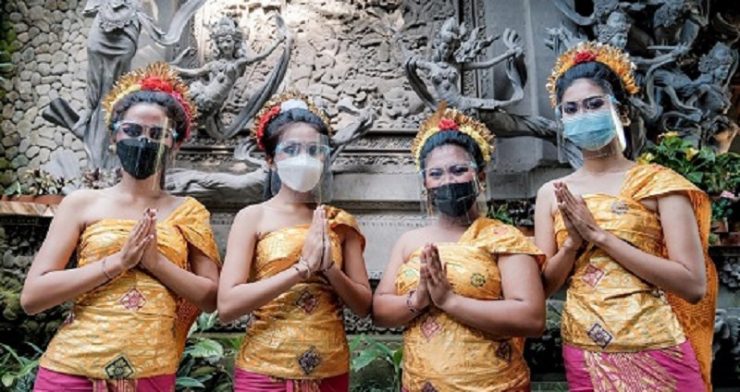THE TOURISM state-owned PT Pembangunan Wisata Indonesia or Indonesia Tourism Development Corporation (ITDC) is improving the governance of The Nusa Dua area, Bali as an effort to encourage the recovery of the tourism sector amid the COVID-19 pandemic.
This governance improvement includes the preparation of infrastructure as well as the preparation and implementation of Standard Operating Procedures (SOP) in accordance with the Cleanliness, Health, Safety, and Environmental Sustainability (CHSE) implementation guidelines from the Ministry of Tourism and Creative Economy.
“To support regional operations as well as various Bali tourism recovery programs, we have improved regional governance based on health protocols, so as to provide security and comfort guarantees for visitors who come, live, and have activities in our area,” said Managing Director of The Nusa Dua. I Gusti Ngurah Ardita, in an ITDC press statement, quoted Friday (7/16).
Ardita said, in addition to having received CHSE certification, The Nusa Dua managed by ITDC has also completed the provision of vaccinations for all tourism workers and the village community supporting The Nusa Dua area.
The application of health protocols for visitors is carried out since arrival in the form of checking identity cards, booking confirmations, or permit letters to be able to enter the area, which is then followed by body temperature checks at each hotel and facility.
In addition to the obligation to use masks for all visitors when they are active in the area, ITDC also ensures the implementation of physical distancing in the form of crowd management by limiting the number of visitors at a tourist attraction location to a maximum of 25 people and implementing Queue and Interaction Management by adjusting the queue distance so as to prevent the accumulation of visitors.
Every tourist transaction in the entire area of The Nusa Dua also uses a cashless system in the form of using the Indonesian Standard Quick Response Code (QRIS) system, thereby reducing interaction through touch.
When leaving the area, visitors will also follow a series of checks in the form of measuring body temperature when checking out at the hotel, wearing masks and checking the number of passengers in the vehicle to ensure the implementation of social distancing.
“As a mitigation effort, The Nusa Dua also provides health services with adequate medical personnel from BIMC Siloam Nusa Dua in collaboration with all hotels and facilities in the area to handle tourists both indicated and in emergency conditions exposed to COVID-19,” Ardita explained.
Currently, BIMC Siloam Nusa Dua also provides COVID-19 test drive-thru and mobile services specifically for visitors or tourists staying in The Nusa Dua area. All tenants operating in The Nusa Dua area currently have obtained CHSE certification and all workers in the area and the community in the buffer villages have completed the vaccination program.
This is an effort to increase the confidence of tourists to visit The Nusa Dua and travel in a safe and certified travel corridor, so that by starting this visit the occupation of the area can be maintained.
The occupancy of The Nusa Dua area for the January-June 2021 period was recorded at 7.71%, 5.08%, 9.80%, 9.58%, 10.75% and 19.88%, respectively. Meanwhile, the number of tourist visits to The Nusa Dua in January-June 2021 reached almost 79,000 people and was dominated by domestic tourists as many as 70,366 people. Domestic tourist arrivals increased compared to the previous year’s period which only reached 28,160 people.
“We as managers of The Nusa Dua area are grateful that the occupancy rate of the area is maintained during the first semester of 2021. The increase in occupancy, especially in June 2021, is driven by, among other things, the increase in domestic tourist visits and the number of meetings held in the area, both organized by government agencies and private sector,” Ardita noted.
As of the end of June, 17 hotels and villas have been operating from 20 hotels and villas in the area, with more than 4,600 rooms available out of a total of 5,175 rooms. This number increased from 2,410 rooms operated by seven hotel tenants before July 31, 2020. Meanwhile, as many as seven facilities have been operating from as many as 10 existing facilities in the area.
“With the completeness of integrated facilities and strict health protocol SOPs in the area, we are optimistic that the area’s occupancy rate will continue to show a positive trend, and we hope that these improvements can contribute to the recovery of Bali tourism,” Ardita concluded. [antaranews/photo traveltext.id]
















